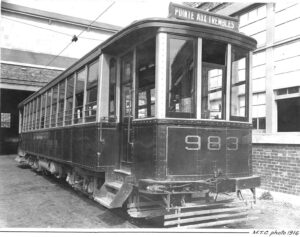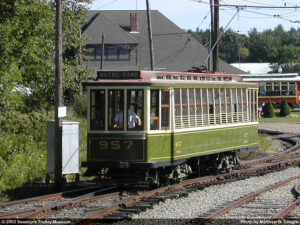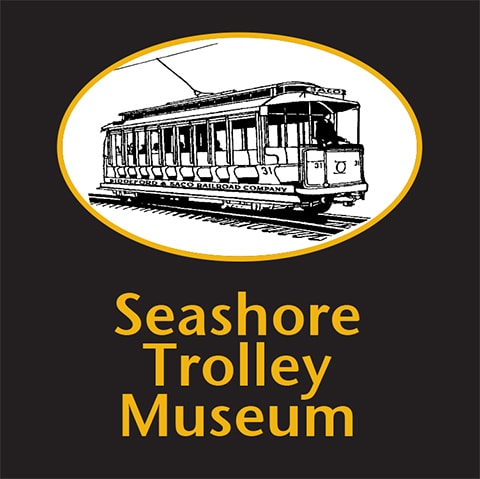
No. 957’s sister No. 983 taken 1916, origin unknown; STM collection.
Operating History: Montreal was the first city anywhere to use the prepayment system where passengers boarded on a large rear platform and where the conductor collected fares as the car proceeded. Riders exited at the front of the car. This system was known as Pay As You Enter,” or “P.A.Y.E.” Previously, the conductor would collect fares after passengers were seated. Montreal went through a series of refinements as the optimum platform layout was determined. The initial such car in 1905 had a very long platform and multiple doors which froze the conductor during the Montreal winter. No. 957 is part of a subsequent order of prepayment cars with shorter platforms and fewer doors. The ideal design is exemplified by car No. 2652 which is also at Seashore. No. 957 is one of 50 cars built by Ottawa Car Co. for the Montreal Street Railway in 1910-11. Ottawa Car Co provided the bodies, but MSR purchased other components and assembled the cars in its own shops. Montreal Street Railway assigned odd numbers from 901 to 999 to these cars. The 901 series were very early cars to be built almost entirely of steel. Industry unfamiliarity with steel resulted in a heavily overbuilt car, which at 54,010 pounds, is one of Seashore’s heaviest streetcars. Another feature of No. 957 is the unique “Montreal roof.” This has a sloping monitor that ends midway above the vestibule rather than extending to the ends of the car. Montreal introduced this roof style in 1896 and used it until the 1913 introduction of the arch roof design.
Later in 1911, after acquiring the 901 series cars, the Montreal Street Railway was consolidated into the Montreal Tramways Company. The system was taken over by the city-owned Montreal Transportation Commission in 1951. Despite its less than ideal platform and despite high power consumption due to its weight, No. 957 served for many years, before being converted into a work car in 1953. In work service, No. 957’s purpose was to paint clearance lines on the street to deter motorists from parking too close to the track on narrow streets and at curves. It survived until the end of Montreal streetcar service in 1959.
Museum Ownership: During the 1950s, Seashore members enjoyed visits to Montreal to experience an extensive, traditional streetcar system which had disappeared elsewhere in North America. When Montreal’s streetcar service ended in 1959, Seashore agreed to purchase several Montreal cars, but the museum first needed to add storage capacity and to build a loop to operate Montreal’s single-ended cars. The Montreal Transportation Commission agreed to store the museum’s cars until Seashore was ready to receive them. No. 957 came to Seashore in 1963 along with Montreal Nos. 2052, 2652, 1176 and 1177. (Nos. 1176 and 1177 were used for parts and were not accessioned.) A year later, Seashore also enhanced its extensive Montreal collection with sightseeing car No. 2. No. 957 arrived in an advanced state of deterioration. Extensive restoration of No. 957 in the 1970s and1980s was Seashore’s most expensive restoration job up to that time. The restored interior features varnished cherry woodwork, authentic rattan seat upholstery and original brass lighting fixtures. One other 901 series car, No. 997, is preserved at the Canadian Railway Museum near Montreal.
Current Condition: No. 957 is presently out of service with an apparent motor problem.

No. 957 at Seashore Trolley Museum; STM collection.
 |
 |
 |
